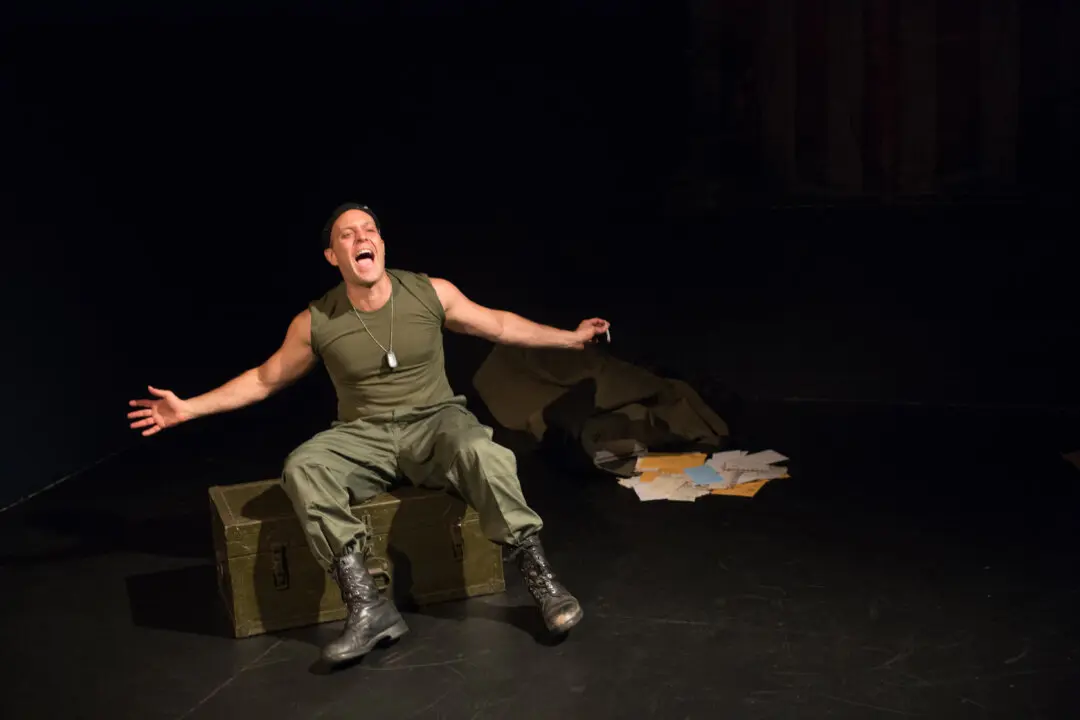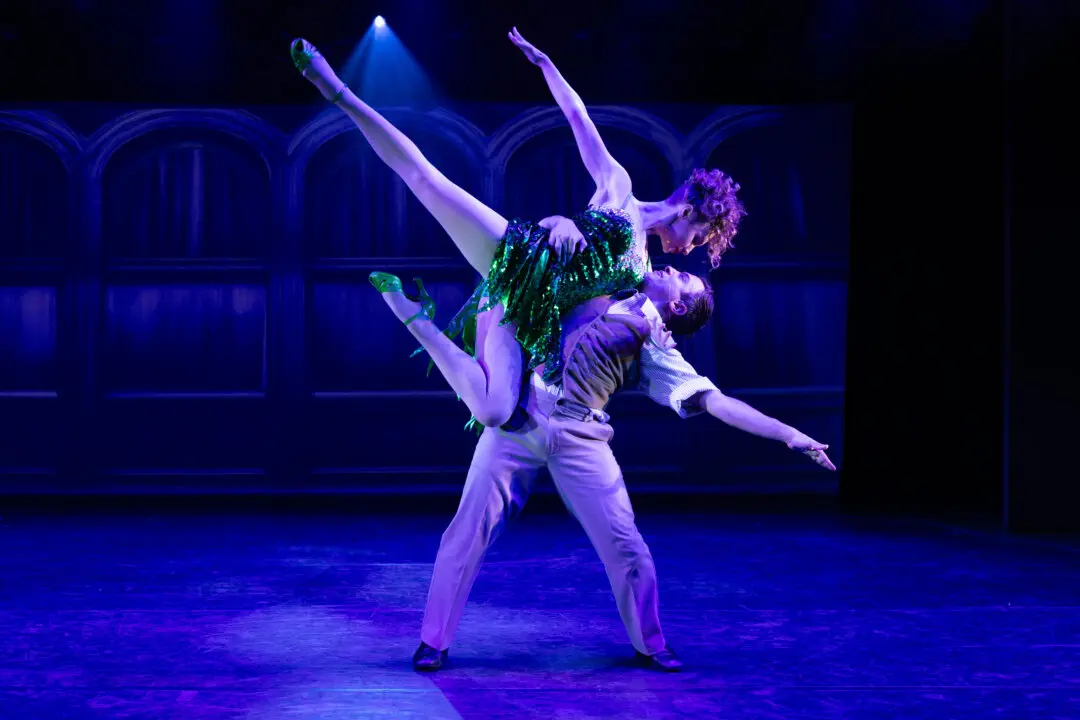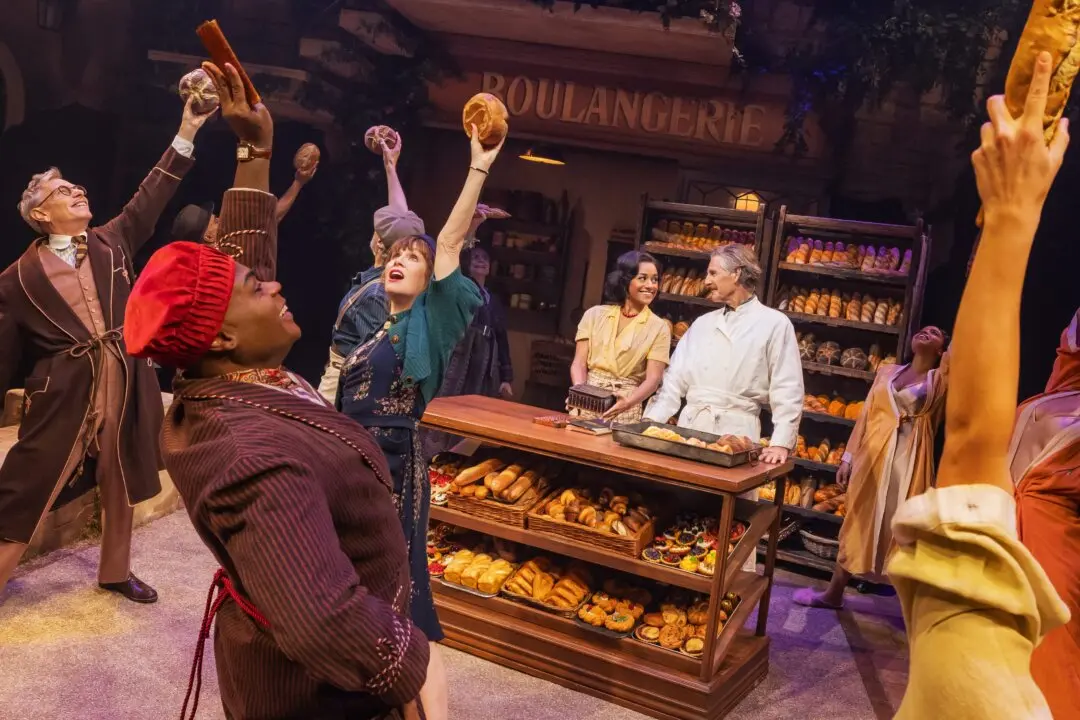NEW YORK—Now in its 14th season, Scott Siegel’s Broadway by the Year series continues to click on all cylinders, with their latest production offering a joyful trip down the memory lane of musical theater.
While the premise has usually been to have each entry in the series showcase the songs of one particular Broadway season, currently they’re breaking the last 100 years of Broadway into fourths, revisiting a quarter century in each of four separate shows. As Siegel put it, they cover “100 years in 100 songs with 100 stars.”
The second evening in this series, which took place at The Town Hall on Monday, March 31, looked at the years 1940-1964. Songs offered included such Broadway classics as “Maria” from West Side Story (1957) and “If I’m Not Near the Girl I Love” from Finian’s Rainbow (1947), performed ably by Brian Charles Rooney and Jeffrey Schecter.
More obscure but no less enjoyable numbers included “My Ship” from Lady in the Dark (1941), performed by Nancy Anderson and “Love, Look Away” from Flower Drum Song (1958), performed by Deborah Tranelli.
Schecter, who also did his own choreography for his number, played a leprechaun who seemed to be 80% Irish and 20% Jewish.
Among some of the other highlights of the evening was Carolyn Montgomery-Forant delivering a brassy version of “I Can Cook, Too,” from On The Town (1944); Gavin Lee looking dashing in a suit while performing “I’ve Got Your Number” from Little Me (1962), (for which he did his own choreography); and Lisa Howard giving a stirring rendition of “Climb Ev’ry Mountain” from The Sound of Music (1959).
Siegel showed himself to be a perfectly genial host, introducing the various performers and dropping in numerous tasty morsels of trivia concerning the numbers showcased. For example, Lucille Ball and Desi Arnaz put up some of the money for the original Broadway production of The Most Happy Fella (1956), which explained why the show was featured in an episode of their TV series “I Love Lucy.”
Also interesting, producer Mike Todd walked out of an out-of-town tryout of the Rodgers and Hammerstein musical Away We Go, saying the show had absolutely no chance to succeed. That show changed its title to Oklahoma and had an initial Broadway run of more than five years.
There was also the time the songwriting team of Alan Jay Lerner and Frederick Loewe were asked to features songs from their musical My Fair Lady on “The Ed Sullivan Show.” However, the two talked Sullivan into featuring songs from their new show Camelot instead, the resulting publicity changing “Camelot” from a so-so musical at the box office to a bona fide hit.
Speaking of Rodgers, he was well-represented, with songs performed from Pal Joey (1940), By Jupiter (1942), Oklahoma (1943), Carousel (1945), South Pacific (1949), Flower Drum Song (1957), and The Sound of Music (1959). Rodgers collaborated with Lorenz Hart on the first two of these shows and worked with Oscar Hammerstein II on the last five.
Siegel also remarked that Rodgers & Hammerstein were the first people to introduce the microphone to the Broadway stage, using floor mikes in their Broadway production of South Pacific.
Other interesting moments included Anita Gillette singing “Nightlife,” a torch song she first introduced in the 1962 show All-American, proving she still has what it takes to deliver it flawlessly.
Marilyn Maye, one of the few people to sing more than one song during the evening, closed the show with “Before the Parade Passes By” from Hello, Dolly (1964) as well as singing “Guess Who I Saw Today” from the musical revue New Faces of 1952.
Elsewhere, Patrick Page had great fun hamming it up while performing “Captain Hook’s Waltz” from Peter Pan (1953), winningly backed up by the Broadway by the Year Chorus.
Also great fun was Liz Larson singing “Ooh, My Feet,” from The Most Happy Fella, about a waitress who has just finished working a very long shift.
The musical chores for the production were capably handled by the Ross Patterson Little Big Band, the only exception to this being when the husband and wife team of Eric Comstock and Barbara Fasano performed their numbers from “By Jupiter” and “Call Me Madam” (1955), when Comstock took over on the piano.
The entire evening passed relatively quickly and enjoyably, and if one didn’t care for a particular number, there was always the next song to sample and soak up. A woman sitting behind this writer commented how much she hated “Climb Ev’ry Mountain.” Ironically, Howard’s performance garnered the most sustained applause of the night.
The only problem with the performance was the sometime uneven mix of sound and vocals, the music drowned out the lyrics in a couple of numbers. Also, some of the performers who sang without a microphone didn’t quite have the vocal chops to pull it off, especially in the relatively large Town Hall performance space—though such problems were fortunately in the minority.
Broadway by the Year offers up a delightful smorgasbord of musical delights, most of which when taken out of the context of their particular shows, can stand on their own nicely. The next in the Broadway by the Year series takes place on May 12, covering the years 1965-1989. You are advised not to miss it if at all possible.
Broadway by the Year
The Town Hall
123 West 43rd Street
Information: thetownhall.org/broadway-by-the-year-upcoming-season
Judd Hollander is the New York correspondent for the London publication The Stage.




